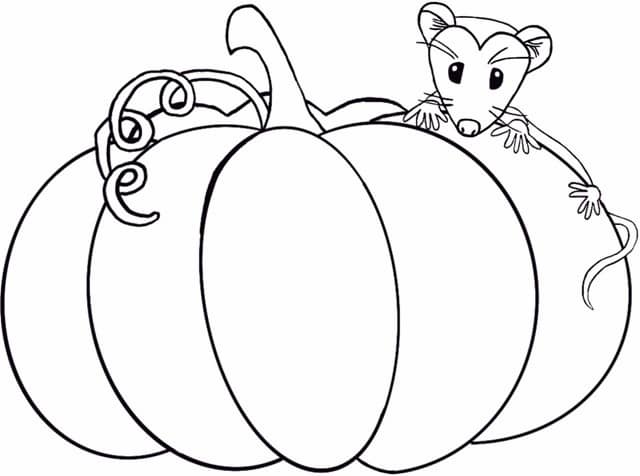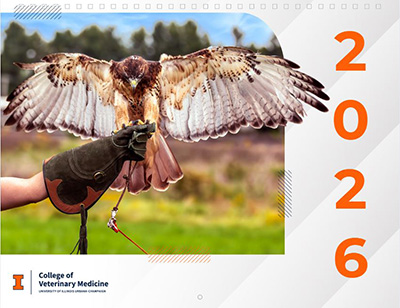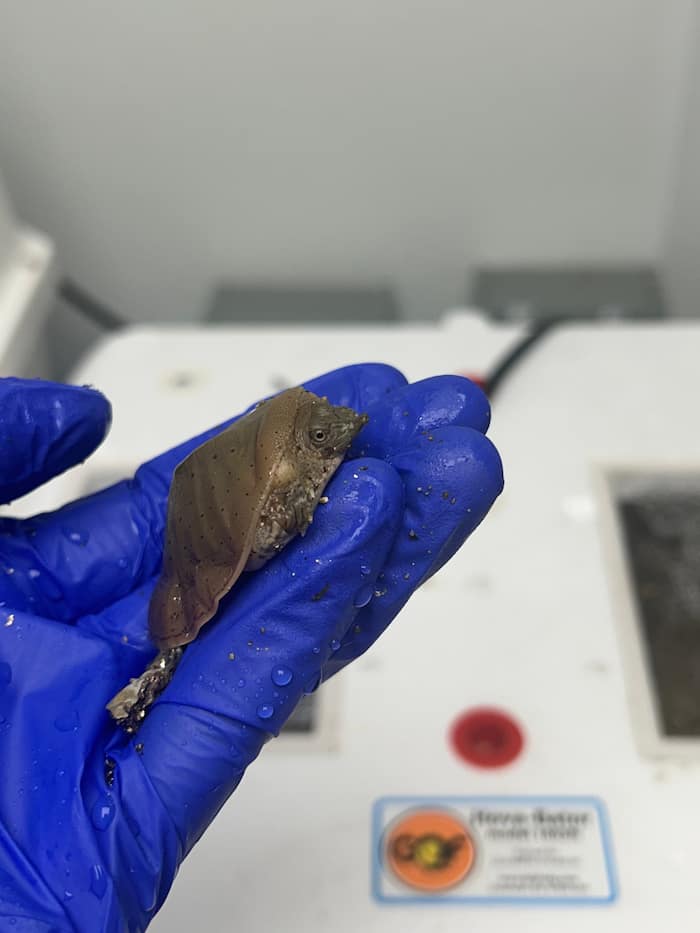Student Blog by Aubrey Engel, VM 21
An Osprey presented to the Wildlife Medical Clinical after a concerned citizen spotted the bird floating face down in Clinton Lake. This good Samaritan waded out in the water to rescue the bird – an impressive feat considering Osprey are large raptors that are never considered friendly. This finder noticed that the bird was tethered by fishing line – the line wrapped around the body and a hook punctured the right leg. Once removed from the water, the bird was immediately brought to our clinic, where student volunteers quickly worked to assess and stabilize her.
When she arrived (assumed to be female due to her large size), she was wet and cold, but a full physical exam showed no abnormalities other than the fishing hook embedded in her right hock, or ankle. She was given pain medication and sedated, so the hook could be removed and her leg could be fully assessed.
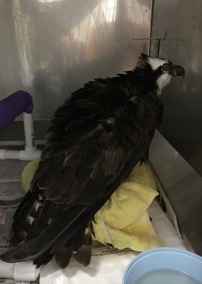
Puncture wounds like these are particularly tricky because they can penetrate much deeper than expected and result in much greater injury than what meets the eye. The wound was cleaned and dressed, and the osprey was placed on antibiotics as well as anti-inflammatories.
In the days following the hook removal, the WMC staff was concerned about how the wound would heal and if there would be lasting damage or loss of function in that leg. However, the bird made great improvements as the wound started to heal appropriately and she regained full use of the limb.
Ospreys are notoriously difficult to rehabilitate, as they are incredibly stressed and are known for refusing to eat while in captivity. This patient was no exception, and despite our best efforts, not only did she needed to be hand-fed but she began to develop feather damage as a result of the stress of handling and attempting to escape her enclosure.
So as soon as she had completed her course of antibiotics and her wounds appeared to be in good shape, she was transferred to the Illinois Raptor Center (IRC) for continued care. At the IRC, her healing process could be monitored in much larger flight cages with reduced handling.
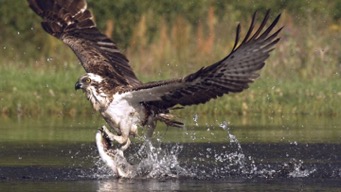
This patient was lucky that someone found her when they did. Ospreys survive on a diet primarily of fish. It is likely that this bird was just fishing for dinner and got tangled up in an abandoned fishing line. And she’s not the only one. At the Wildlife Medical Clinic, we frequently see cases of raptors, waterfowl, and turtles who have been entangled in and injured by fishing equipment. Some cases are easily fixed,many are not. Any fishing equipment left in the environment can pose risk to the fish and other animals that live there, as well as their predators. Please protect your wildlife by taking care to retrieve all your fishing tackle or any abandoned equipment, so it doesn’t harm others like this osprey!

